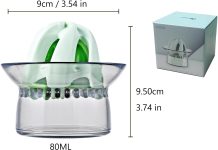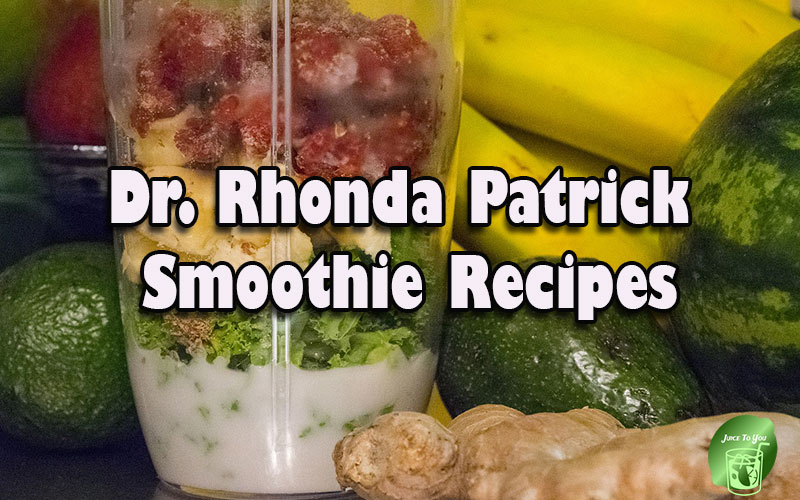Ladies and gentlemen, have you ever wondered if a celery smoothie holds the upper hand over its counterpart, celery juice? Well, wonder no more, as we dive into the depths of this delightful dilemma. Today, we explore the benefits, flavors, and overall experience of sipping on a refreshing celery smoothie and delve into whether it truly triumphs over the classic, tangy elixir of celery juice. Brace yourselves for a mouthwatering journey that will leave you contemplating your next sip.
Review contents
Nutritional value of celery
Vitamins and minerals in celery
Celery is packed with essential vitamins and minerals that are crucial for our overall health. It is a great source of vitamin K, vitamin C, potassium, and folate. Vitamin K plays a vital role in blood clotting and bone health, while vitamin C is an powerful antioxidant that strengthens our immune system and supports collagen production. Potassium helps regulate our blood pressure and fluid balance, and folate is essential for cell growth and development. Incorporating celery into our diet helps ensure we are getting these important nutrients.
Antioxidants in celery
Celery contains various antioxidants, including beta-carotene, flavonoids, and vitamin C. These antioxidants help combat the harmful effects of free radicals in our body, which can cause oxidative stress and contribute to chronic diseases. By consuming celery, we can benefit from its antioxidant properties and protect our cells from damage.
Fiber content in celery
Fiber is a crucial component of a healthy diet, and celery is a great source of dietary fiber. Fiber helps promote regular bowel movements, prevents constipation, and aids in achieving and maintaining a healthy weight. It also helps control blood sugar levels and lowers the risk of heart disease. By including celery in our diet, we can increase our fiber intake and support our digestive health.
Benefits of celery juice
Promotes hydration
Celery juice is an excellent way to stay hydrated, especially during hot summer months or after intense physical activity. It has a high water content, which helps us replenish lost fluids and maintain our body’s hydration levels. Additionally, the natural electrolytes present in celery juice, such as potassium and sodium, contribute to optimal hydration.
Aids digestion
Celery juice has been praised for its digestive benefits. It acts as a natural diuretic and helps flush out toxins from our body. It also stimulates the production of digestive enzymes, which facilitates the breakdown and absorption of nutrients, promoting a healthy digestive system. Many individuals have reported improved digestion and reduced bloating after incorporating celery juice into their daily routine.
Lowers inflammation
Chronic inflammation is a common underlying factor in various diseases, including arthritis and certain types of cancer. Celery juice has anti-inflammatory properties that can help reduce inflammation in the body. Its antioxidants, such as flavonoids and vitamin C, help combat inflammation by neutralizing free radicals and inhibiting inflammatory pathways.
Enhances detoxification
Celery juice is often touted as a powerful detoxifying agent. It supports the liver in its detoxification process by increasing bile production. Bile plays a crucial role in breaking down fats and eliminating toxins from our body. By including celery juice in our diet, we can support our body’s natural detoxification mechanisms and promote overall detoxification.
Boosts immune system
Celery juice is rich in vitamin C, which is known for its immune-boosting properties. Vitamin C strengthens our immune system and helps protect against common illnesses and infections. By consuming celery juice regularly, we can give our immune system a natural boost and improve our body’s ability to fight off harmful pathogens.
Benefits of celery smoothie
Retains fiber
One of the major advantages of celery smoothies is that they retain the natural fiber content of celery. While juicing removes most of the fiber, blending celery in a smoothie ensures that we still receive the fiber benefits. Fiber aids in digestion, promotes feelings of fullness, and contributes to better blood sugar control.
Provides sustained energy
Unlike celery juice, which is mainly a source of hydration and nutrients, celery smoothies can provide sustained energy due to their inclusion of other ingredients. By adding fruits, vegetables, and healthy fats to our celery smoothies, we can create a well-rounded meal replacement or snack that provides a steady release of energy throughout the day.
Offers versatile recipe options
Celery smoothies offer endless recipe variations to suit our taste preferences and dietary needs. We can combine celery with other fruits and vegetables to create refreshing and nutritious smoothies. Whether we prefer a sweet and tropical flavor or a more savory option, there are countless possibilities for creating delicious celery smoothies that cater to our individual preferences.
Enhances satiety
The fiber content in celery smoothies contributes to a feeling of fullness, which can be beneficial for weight management or portion control. By including celery smoothies as part of our meal plan, we may find ourselves feeling satisfied for longer periods, reducing the temptation to indulge in unhealthy snacks or overeat throughout the day.
Balances blood sugar levels
The combination of fiber, protein, and healthy fats in celery smoothies helps stabilize blood sugar levels. This is particularly beneficial for individuals with diabetes or those concerned about maintaining stable energy levels throughout the day. By incorporating celery smoothies into our diet, we can promote better blood sugar control and reduce the risk of spikes and crashes.
Comparison of nutrient content
Vitamin and mineral retention in celery juice
While celery juice offers numerous benefits, some vitamins and minerals may be lost during the juicing process. Vitamins such as vitamin C and B vitamins may be partially reduced due to oxidation or heat exposure. However, celery juice still retains essential nutrients such as potassium and vitamin K. To maximize the nutrient content of celery juice, it is recommended to consume it immediately after juicing.
Fiber loss in celery juice
One significant drawback of celery juice is the lack of fiber. When juicing celery, the fibrous pulp is separated, eliminating much of the dietary fiber. While fiber is essential for digestion and overall health, individuals who prefer a more concentrated nutrient boost may still find value in celery juice. However, for those seeking the benefits of fiber, a celery smoothie is a better option.
Nutrient preservation in celery smoothie
Celery smoothies offer the advantage of retaining the natural nutrient content of celery. By blending the entire vegetable, including the fiber-rich stalks, we can enjoy the full array of vitamins, minerals, and antioxidants present in celery. This makes celery smoothies a versatile and nutrient-dense option for individuals looking to maximize the health benefits of this vegetable.
Potential drawbacks of celery juice
Excessive sodium intake
While celery is naturally low in sodium, some commercial celery juice products may contain added salt for flavor or preservation purposes. It is essential to read labels carefully and choose low-sodium options or make our own celery juice at home to minimize excessive sodium intake.
Impact on blood sugar levels
Individuals with diabetes or those concerned about blood sugar control should be cautious when consuming celery juice. Although celery has a low glycemic index, the juicing process may concentrate the natural sugars, leading to a rapid elevation in blood sugar levels. Monitoring blood glucose and adjusting portion sizes accordingly can help manage this potential drawback.
Potential drawbacks of celery smoothie
Calorie content
Celery smoothies, especially when combined with other ingredients, can be higher in calories compared to celery juice alone. While this can be beneficial for those looking for a meal replacement or needing additional energy, individuals aiming for weight loss or calorie control should be mindful of the overall calorie content of their celery smoothies.
Need for added ingredients
To enhance the flavor and nutritional profile of celery smoothies, additional ingredients such as fruits, vegetables, or healthy fats may be incorporated. While this can provide a well-rounded meal or snack, it also means more preparation time and potentially higher costs. Individuals with limited access to a wide range of ingredients or those seeking a simple and affordable option may find celery juice more convenient.
Effect on digestion
Celery juice and digestion
Many individuals have reported improved digestion and reduced bloating after incorporating celery juice into their daily routine. The natural enzymes present in celery juice help break down food more efficiently, reducing digestive discomfort. Additionally, the hydration properties of celery juice can support regular bowel movements and prevent constipation.
Celery smoothie and digestion
Celery smoothies, especially those that retain the fiber content, can further support digestion. Dietary fiber adds bulk to the stool and promotes regularity, preventing constipation. Additionally, the combination of fruits, vegetables, and fiber in celery smoothies provides a wholesome meal option that nourishes the gut and aids in the overall digestive process.
Weight loss benefits
Celery juice for weight loss
Celery juice is often promoted as a weight loss aid due to its low calorie and high water content. It can be consumed as a low-calorie snack or replacement for sugary beverages. Additionally, celery juice’s diuretic properties may assist with reducing water retention and bloating, giving a slimmer appearance. However, it’s important to remember that weight loss involves a combination of factors such as a balanced diet, regular exercise, and overall lifestyle.
Celery smoothie for weight loss
Celery smoothies can be a valuable tool for weight loss when incorporated into a balanced diet. The fiber content in celery smoothies contributes to feelings of fullness, reducing the likelihood of excessive calorie intake. Furthermore, the sustained energy provided by celery smoothies can support an active lifestyle, aiding in weight management and promoting overall well-being.
Optimal preparation techniques
Juicing celery
To prepare celery juice, start by washing the celery and removing any dirt or debris. Trim off the ends and separate the stalks. Use a juicer to extract the juice from the celery, collecting the liquid in a container. It is best to consume celery juice immediately after juicing to maximize its nutrient content and freshness.
Blending celery in smoothies
For a celery smoothie, wash and chop the celery stalks. Add them to a blender along with other desired ingredients, such as fruits, vegetables, or healthy fats. Blend until smooth and creamy, adjusting the consistency by adding water or plant-based milk if desired. Enjoy the celery smoothie immediately or refrigerate for later consumption.
Personal preference and lifestyle factors
Taste preferences
When choosing between celery juice and celery smoothies, personal taste preferences play a significant role. Some individuals may enjoy the refreshing and hydrating taste of celery juice, while others may prefer the versatility and flavor options offered by celery smoothies. Exploring different recipes and listening to our body’s preferences can help us find what suits us best.
Convenience and time constraints
Consideration of convenience is important when deciding between celery juice and celery smoothies. Celery juice can be prepared quickly and easily, making it a convenient option for individuals with limited time. On the other hand, celery smoothies may require more preparation and ingredient availability. Assessing our lifestyle and time constraints can help determine which option aligns better with our routine.
Dietary restrictions and goals
Individuals with dietary restrictions or specific health goals may find that one option is better suited to their needs. For example, those following a low-sodium diet may prefer homemade celery juice to control sodium intake. Similarly, individuals aiming for weight loss or improved digestion may find that celery smoothies, with their fiber content, are more beneficial. Understanding our dietary requirements and goals can guide us in making an informed decision.
In conclusion, both celery juice and celery smoothies offer unique benefits and considerations. While celery juice promotes hydration, aids digestion, and boosts the immune system, celery smoothies retain fiber, provide sustained energy, and offer versatile recipe options. The choice between the two depends on personal preferences, lifestyle factors, and specific health goals. Whether we choose to incorporate celery juice or celery smoothies into our diet, we can enjoy the numerous nutritional advantages of this versatile vegetable.

































